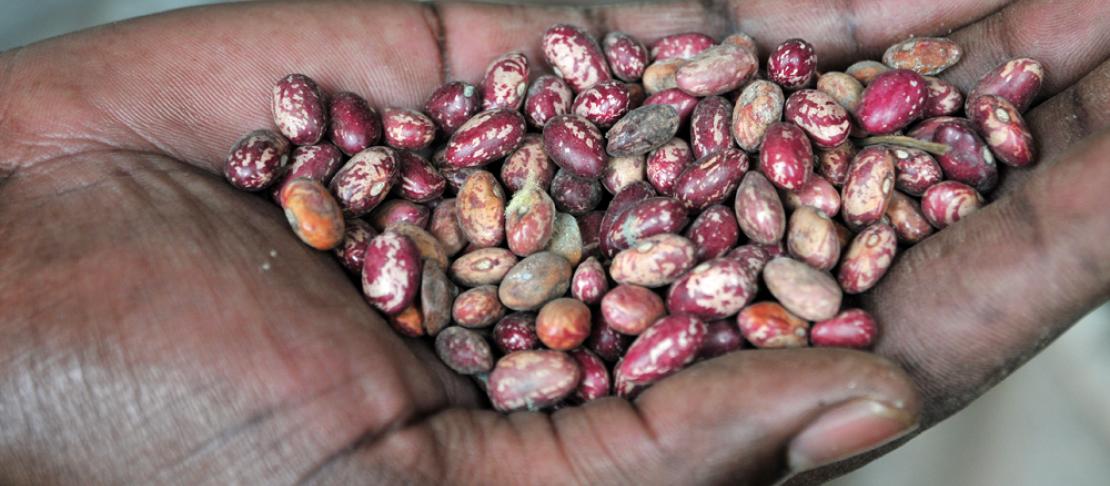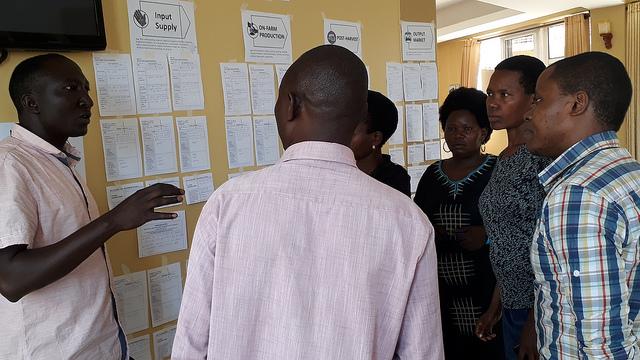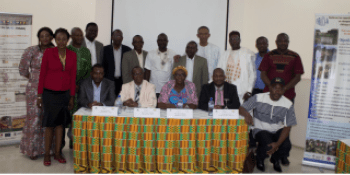Enhancing community resilience through planning for climate-smart agriculture, gender and nutrition

Highlights from a stakeholder validation workshop aiming to increase food and nutrition security in Uganda.
Stimulating the adoption of gender and nutrition sensitive climate-smart agriculture (CSA) requires policy action that aligns national agendas with implementation. The second phase of the Policy Action for Climate Change Adaptation (PACCA) project seeks to link CSA with gender and nutrition to solve challenges to food and nutrition security.
As part of the project, the International Institute of Tropical Agriculture (IITA) in collaboration with the International Center for Tropical Agriculture (CIAT) and the Mbale District Local Government (MDLG) organized a three-day stakeholder validation workshop in Uganda in January 2019 for researchers, district technocrats and politicians, civil society organization and farmer representatives. The goal was to identify key risks across the four main value chain commodities, relate these risks to underlying vulnerability factors of specific groups of people, and suggest adaptation options that address these vulnerabilities and risks.
Dilemma in prioritizing value chain commodities
Participants mapped the value chain commodities using existing literature and key informant interviews. The initial prioritization of the four key value chain commodities (poultry, onions, cabbage and ground nuts) was based on criteria related to resilience and/or climate stability, population involved (with special focus on women and youth) and whether the commodity was an important source of micronutrients.
However, the process of selecting the value chain commodities was contentious and lively discussions emerged as stakeholders strongly emphasized food security at the expense of resilience. George Wanakina, the District Production and Marketing Officer at MDLG, expressed concerns for the need to engage with value chain commodities that are beneficial socially, politically and economically. “From the four indicators used, which one is beneficial to Mbale?” Wanakina asked. “If you are talking of food security and you take these priority value chains, you become food insecure.”
Given that prioritization was done to balance both food security and resilience, new commodities, such as bananas, maize and beans made it to the priority list replacing poultry, cabbage and ground nuts respectively. However, some noted that although the priority value chain commodities were resilient and addressed nutrition security, they were not profitable. “Leaving out coffee is bothering my mind,” Bernard Mujasi, the Mbale district Local Council V (LCV) Chairman said. “Coffee has to be there, whether it is resilient or not.”
At the end of the workshop, stakeholders agreed on prioritizing banana, onion, maize and bean value chain commodities.

Participants at the stakeholder validation workshop. Photo: J.F. Okiror (IITA)
Underlying vulnerability factors
Special emphasis was put on identifying who are the most vulnerable to the risks affecting the value chain commodities. In terms of gender, age and economic status, the most affected groups included people living in poverty, youth, children, elderly people, people with disabilities, female-headed households, and households in exposed landscapes.
Workshop participants identified vulnerability factors such as climatic, biophysical, social, economic and institutional factors. Perceived vulnerability factors included the destruction and/or reclamation of water catchments, massive tree cutting for wood products, poor farming techniques, and human activity on steep slopes.
Adaptation methods to manage climate risks
Participants also mapped current adaptation options to manage climate risks and diminish vulnerability. Stakeholders identified value chain-specific on-going and new potential adaptation options to specific risks. Local adaptation and coping strategies included: planting crops like cassava that are not affected by strong winds, applying fertilizers at all stages of production, spraying with pesticides, terracing and purchasing improved seeds. They also added applying fungicides to preserve stored beans and reducing number of meals consumed by households.
The workshop was divided into various sessions. Key activities included the validation of priority value chain commodities and socioeconomic context, the validation of historic climate and future projected changes in climate and related agriculture impacts, as well as the identification of risks and underlying vulnerability factors in each of the four priority value chain commodities, and the assessment of district-level organization capacity to deliver adaptation programs.
The stakeholder validation workshop is one of the activities employed in the climate risk profiling approach developed by CIAT to support the World Bank Kenya Climate Smart Agriculture project. The climate risk profiling employed data collection methods involving literature review, district statistics, development plans, climate analysis, key informant interviews and focus group discussions with district experts and farmer representatives from Lukhonge and Bungokho Mutoto sub-counties of Mbale district.
The evidence generated will be used not only to develop the Mbale district climate risk and nutrition profile, but also for engagement through the climate change and nutrition learning alliance.
John Francis Okiror is the Communications Consultant at IITA.



